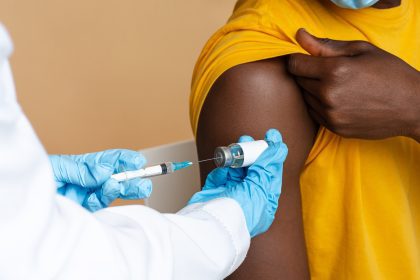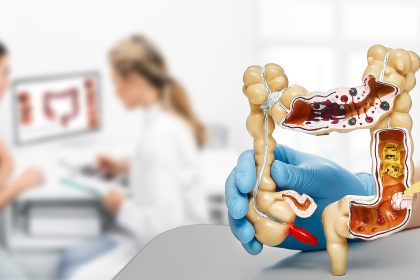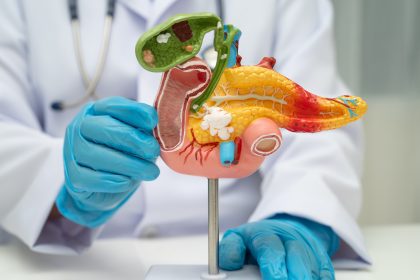Recent years have witnessed a significant shift in our understanding of oral cancer causes. While tobacco and alcohol have traditionally dominated the conversation around risk factors, medical professionals now recognize human papillomavirus (HPV) as a major contributor to a specific type of oral cancer affecting the throat, tonsils, and base of the tongue.
This connection between sexual activity and cancer remains unfamiliar to many Americans despite its increasing prevalence. The stigma surrounding discussions of oral sex often prevents open conversations about this health risk, leaving many uninformed about prevention strategies and warning signs that could save lives.
The statistics paint a concerning picture. Oropharyngeal cancers—those affecting the middle part of the throat including the tonsils and base of the tongue—have increased dramatically over the past several decades. This rise directly correlates with changing sexual practices and the widespread prevalence of HPV in the adult population.
Unlike many other cancers that predominantly affect older individuals, HPV-related oral cancers frequently develop in younger patients. Many victims find themselves blindsided by a diagnosis in their 40s or 50s despite having never used tobacco products or consumed alcohol excessively—traditionally the primary risk factors for oral cancers.
The good news amid these concerning trends? HPV-related oral cancers typically respond better to treatment than those caused by tobacco or alcohol. Additionally, effective prevention strategies exist for those who understand the risks and take appropriate precautions.
The surprising statistics about oral cancer causes
The medical community has documented a dramatic shift in oral cancer demographics over recent decades. Where once these cancers primarily affected older individuals with extensive tobacco or alcohol use, today’s patients often present a completely different profile.
Current medical data reveals that approximately 75 percent of newly diagnosed oropharyngeal cancers contain HPV DNA, indicating that the virus played a role in their development. This percentage has risen steadily since the 1980s, suggesting a fundamental change in the disease’s etiology.
The American Cancer Society estimates that over 12,000 new cases of oropharyngeal cancer are diagnosed annually. The vast majority of these cases now stem from HPV infection rather than traditional risk factors like smoking or drinking. This represents a fundamental shift in our understanding of this disease.
Men face significantly higher risk than women, with males developing HPV-related oral cancers at a rate approximately four times higher than females. This gender disparity remains incompletely understood but may relate to differences in immune response to the virus or anatomical factors.
Age patterns show distinct differences between HPV-related and non-HPV-related oral cancers. Traditional alcohol and tobacco-related cases typically develop after age 60, while HPV-associated cancers commonly affect individuals in their 40s and 50s—often people with otherwise healthy lifestyles.
These statistical trends make clear that sexual history now represents a significant risk factor for certain types of oral cancer. Understanding this connection provides the foundation for effective prevention strategies and early detection efforts that can save lives.
HPV affects more than just the mouth
Human papillomavirus represents one of the most common sexually transmitted infections worldwide, with hundreds of distinct viral types identified. While most people associate HPV with cervical cancer risk in women, the virus actually threatens multiple body sites in both genders.
Beyond oral cancers, HPV infections can lead to cancers of the cervix, vagina, and vulva in women. Men face risks including penile cancer and anal cancer. Both genders can develop genital warts from certain HPV strains, though these strains differ from those most commonly associated with cancer development.
The virus spreads through skin-to-skin contact during sexual activity, including vaginal, anal, and oral sex. Condom use provides some protection but cannot completely eliminate transmission risk since the virus may infect areas not covered by condoms.
Most sexually active adults will contract at least one strain of HPV during their lifetime, with the Centers for Disease Control estimating that approximately 80 percent of the population has been infected at some point. Most infections clear naturally without causing symptoms or long-term problems.
Certain high-risk HPV strains, particularly types 16 and 18, pose the greatest cancer risk. These strains can persist in the body for years or decades, potentially damaging cellular DNA and eventually leading to cancer development in a small percentage of infected individuals.
Understanding HPV’s wide-ranging effects highlights the importance of comprehensive prevention strategies rather than focusing exclusively on one potential outcome such as oral cancer. The same preventive measures that reduce oral cancer risk also protect against these other serious health consequences.
Vaccination offers powerful protection
HPV vaccines represent one of the most significant cancer prevention tools developed in recent decades. These vaccines provide protection against the most dangerous HPV strains, potentially preventing thousands of cancer cases annually across multiple body sites.
The vaccines work best when administered before any exposure to HPV occurs, ideally before becoming sexually active. For this reason, medical authorities recommend vaccination for children around age 11-12, though the vaccines can provide benefits when given through age 26.
Three HPV vaccines have received FDA approval: Gardasil, Gardasil 9, and Cervarix. Gardasil 9, the most commonly administered in the United States, protects against nine HPV types including those responsible for approximately 90 percent of HPV-related cancers.
The vaccination schedule typically involves a series of shots given over 6-12 months, depending on the age at first dose. Completing the full series provides the most robust protection, though even partial vaccination offers significant benefits compared to no vaccination.
For those already sexually active, vaccination may still provide protection against HPV strains not yet encountered. However, the vaccines cannot treat existing infections or reverse cellular changes that have already occurred. This limitation underscores the importance of early vaccination whenever possible.
Vaccine safety has been extensively studied, with over 120 million doses distributed worldwide. The safety profile remains excellent, with most side effects limited to temporary injection site pain or mild fever—similar to other routine vaccinations.
For parents considering HPV vaccination for their children, understanding that these vaccines prevent cancer rather than simply preventing a sexually transmitted infection may help frame the decision. The protection offered extends far beyond sexual health to fundamental cancer prevention.
Testing limitations create challenges
Unlike cervical HPV infections, which can be detected through Pap tests and specific HPV DNA testing, no standardized screening test exists for oral HPV infections. This testing gap creates significant challenges for early detection and prevention efforts.
Without reliable testing methods, most oral HPV infections remain undetected until they either clear naturally or progress to precancerous or cancerous conditions. This detection limitation means many people remain unaware of their infection status and potential risk.
Some specialized research facilities offer oral HPV testing, but these tests have not been validated for routine clinical use and are not currently recommended as screening tools for the general population. Their results may prove difficult to interpret in terms of actual cancer risk.
For those concerned about potential oral HPV infection, regular dental examinations provide the best available screening method. Dentists and dental hygienists can identify suspicious lesions that might indicate precancerous or cancerous conditions, allowing for prompt referral and investigation.
The testing limitations for oral HPV highlight the importance of prevention strategies like vaccination and safer sex practices. Since detection of early infection remains problematic, preventing infection in the first place takes on even greater significance for protecting long-term health.
Research continues on developing effective screening protocols for oral HPV. Until such methods become available, awareness of risk factors and symptoms remains crucial for early detection of potential problems before they advance to later-stage cancer.
Some infections resolve on their own
The natural history of HPV infection offers some reassurance amid the concerning cancer connection. Most HPV infections, including those in the mouth and throat, clear spontaneously without causing long-term problems or requiring medical intervention.
The body’s immune system typically eliminates the virus within one to two years of initial infection. This natural clearance explains why most sexually active adults who contract HPV never develop HPV-related cancer, despite the virus’s widespread prevalence.
Certain factors influence whether an infection will clear or persist long enough to cause cellular damage. These include the specific HPV strain, with types 16 and 18 more likely to persist; immune system function; and lifestyle factors such as smoking, which may impair the body’s ability to eliminate the virus.
Young age at time of infection correlates with better clearance rates. The robust immune response typical in adolescents and young adults provides one reason why persistent infections and subsequent cancers more commonly affect middle-aged or older individuals, despite initial exposure often occurring decades earlier.
For those with known HPV infections, maintaining overall health supports the immune system’s ability to clear the virus. Adequate sleep, regular exercise, nutritious diet, stress management, and avoiding tobacco and excessive alcohol all contribute to optimal immune function.
While the body’s ability to clear many HPV infections naturally provides some reassurance, this fact should not discourage vaccination or safer sex practices. Prevention remains preferable to relying on natural clearance, especially since there’s no way to predict which infections will persist and potentially cause cancer.
Recognizing the warning signs
Early detection significantly improves outcomes for oral cancers, making symptom awareness a critical tool for protecting health. Understanding the warning signs of HPV-related oral cancers helps ensure prompt medical evaluation when problems arise.
Persistent sore throat represents one of the most common early symptoms of HPV-related oropharyngeal cancer. When a sore throat lasts for more than two weeks without other cold or flu symptoms, or recurs frequently without clear cause, medical evaluation becomes warranted.
Difficulty swallowing, medically termed dysphagia, often develops as tumors grow and interfere with normal swallowing mechanics. This symptom may begin subtly with occasional problems swallowing solid foods, gradually progressing to more frequent and severe difficulties.
A lump in the neck frequently indicates that cancer has spread to nearby lymph nodes. These lumps typically feel firm, don’t move easily under the skin, and persist for more than two weeks. Many patients discover these lumps themselves during routine activities like shaving or applying lotion.
Voice changes, particularly persistent hoarseness not associated with a cold or other respiratory infection, may signal a tumor affecting the larynx or structures involved in voice production. Any hoarseness lasting more than two weeks deserves medical attention.
Unexplained weight loss sometimes accompanies oral cancers, resulting from difficulties eating or metabolic changes caused by the cancer itself. Losing more than 5% of body weight over six months without intentional diet or exercise changes warrants medical evaluation.
Non-healing mouth sores, particularly those lasting longer than two weeks, require professional assessment. While most mouth sores heal quickly, persistent lesions might indicate either direct HPV-related changes or other conditions requiring treatment.
Prevention strategies everyone should know
While completely eliminating oral cancer risk remains impossible, multiple strategies can significantly reduce the likelihood of developing HPV-related oral cancers. A comprehensive approach combines several protective measures for maximum effectiveness.
Barrier methods during oral sex provide partial protection against HPV transmission. Dental dams for oral-vaginal or oral-anal contact and condoms for oral-penile contact create physical barriers that reduce direct contact with potentially infected tissues, though they cannot eliminate risk entirely.
Limiting the number of sexual partners directly correlates with reduced HPV exposure risk. Each new partner introduces potential exposure to different HPV strains, increasing the likelihood of encountering high-risk types that might lead to cancer development.
Open communication with sexual partners about sexual health history, testing status, and HPV vaccination creates a foundation for informed decision-making. While these conversations may feel uncomfortable, they play a crucial role in mutual protection.
Tobacco cessation provides substantial benefits for those who currently smoke or use other tobacco products. Smoking not only increases the risk of oral cancer independently but also appears to make it more difficult for the body to clear HPV infections, potentially increasing the likelihood that infection will persist and cause cellular damage.
Moderate alcohol consumption supports both general and oral health. Heavy drinking increases oral cancer risk independently of HPV status and may compromise immune function, potentially reducing the body’s ability to clear viral infections naturally.
Regular dental examinations facilitate early detection of suspicious lesions that might indicate precancerous or cancerous conditions. Dentists and dental hygienists receive training in identifying abnormal oral tissues that warrant further investigation.
Maintaining strong overall health supports immune function, enhancing the body’s ability to clear HPV infections before they cause significant damage. Adequate sleep, regular exercise, stress management, and nutritious diet all contribute to optimal immune system performance.
Treatment options have improved
For those diagnosed with HPV-related oral cancers, treatment options have expanded significantly in recent years. These advances allow for more targeted approaches with fewer side effects than traditional cancer treatments, often while maintaining excellent survival rates.
Transoral robotic surgery (TORS) represents one of the most significant technological advances for treating HPV-related oral cancers. This minimally invasive approach allows surgeons to remove tumors through the mouth rather than making external incisions, potentially preserving speech and swallowing functions while reducing recovery time.
Intensity-modulated radiation therapy (IMRT) delivers precisely targeted radiation to tumor sites while minimizing exposure to surrounding healthy tissues. This targeting can reduce side effects like dry mouth, difficulty swallowing, and damage to salivary glands compared to conventional radiation approaches.
Immunotherapy has emerged as a promising treatment option for certain cases, particularly those that don’t respond to initial treatment. These medications help the body’s immune system recognize and attack cancer cells more effectively, sometimes achieving remarkable results even in advanced cases.
Reduced treatment intensity protocols are under investigation for HPV-related oral cancers, which typically respond better to treatment than those caused by tobacco and alcohol. These approaches aim to maintain high cure rates while decreasing long-term side effects that affect quality of life.
Multidisciplinary care teams provide comprehensive treatment planning tailored to each patient’s unique situation. These teams typically include surgical oncologists, radiation oncologists, medical oncologists, speech pathologists, nutritionists, and other specialists working collaboratively to optimize outcomes.
Post-treatment rehabilitation helps patients address and overcome functional challenges that may result from cancer treatment. Speech therapy, swallowing therapy, physical therapy, and nutritional support all play important roles in restoring function and quality of life after treatment.
With continued advances in treatment approaches and growing understanding of HPV-related oral cancers, patients today face better prospects than ever before. Early detection through symptom awareness remains crucial for accessing these improved treatments at the most effective stage.
The connection between HPV, oral sex, and certain types of oral cancer represents an important public health issue that deserves greater awareness. By understanding the risk factors, prevention strategies, and warning signs, individuals can take proactive steps to protect their health while still enjoying fulfilling intimate relationships.
Knowledge provides power in addressing this emerging health concern. Rather than responding with fear or judgment, a fact-based approach to understanding and preventing HPV-related oral cancers offers the most productive path forward for individuals and communities alike.












